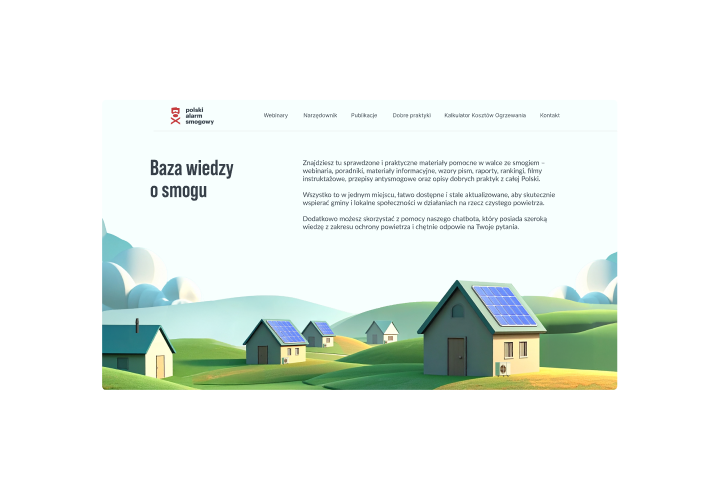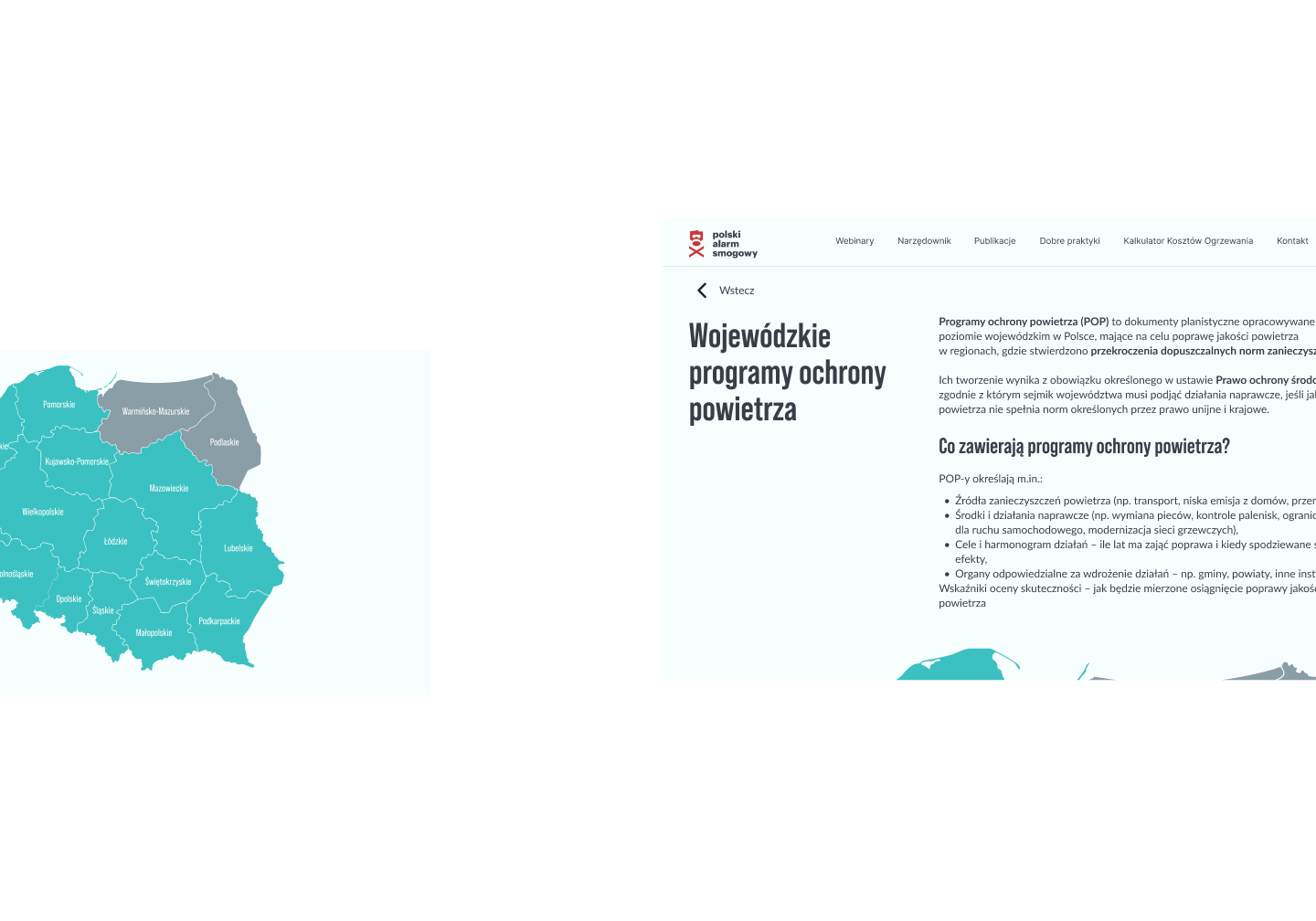Defined business goals and user needs
Designing Change Together
We believe in partnership, participation, and social change – these values guide everything we do. That’s why we invited Graphic Design students from SWPS University and Computer Science students from Wrocław University of Science and Technology, together with Tech To The Rescue, to collaborate on creating an application for the Polish Smog Alert. Students from both universities met in our office, where – combining their design and technology skills – they co-created the product from scratch. Equally important as building the application itself was our goal to support young people entering the job market, help them develop their skills, positive attitudes, and a spirit of collaboration, and strengthen their sense of social responsibility. This project became not only a digital challenge but also a lesson in responsible design and cross-sector teamwork.


Overview
Polish Smog Alarm is a non-governmental organization founded by people who believe in the right to breathe clean air and the responsibility to create a better future. It stands up against smog and pollution, guided by the conviction that everyone deserves a healthy life and a safe environment. Every action it takes brings us closer to a world where fresh air is not a privilege, but a basic standard of living. Rooted in the principles of sustainable development, it works to shape a planet that is kinder, healthier, and more hopeful for the generations to come.
Technologies:
Project driven by:

Martyna initiated the project and guided the design team. With a strong academic background and teaching experience, she’s committed to supporting others in their design growth. Balancing business and academia, she is currently pursuing an Industrial PhD in Product Design, in collaboration with CSHARK, the Polish Ministry of Science, and the SWPS Design Institute.
See linkedin profile See linkedin profileMartyna Mrozek
Head of Product Design

Beata is an exceptional expert in bridging domain knowledge – especially in banking – with technology. She leads with a product mindset, managing teams to deliver their best while optimizing processes for greater efficiency and quality. In the Smog Alarm project, she served as Product Owner, overseeing the technical team, coordinating end-to-end processes, and mentoring young engineering students.
See linkedin profile See linkedin profileBeata Latuszek
Technical Project Manager
Client Needs
Polish Smog Alert needed a platform to act as a comprehensive knowledge base on air pollution, climate change, and emerging technological solutions – enhanced with an AI-powered chat for effortless access to information. The audience ranges from local government representatives and municipal officers to everyday citizens across Poland who want to better understand how to protect the air we all share. This product was created for them all.


From Discovery
to Deployment
For the Polish Smog Alarm, CSHARK led a full end-to-end digital product process – from discovery and design to development and AI implementation. The project was carried out together with design and computer science students, who collaborated closely and learned from one another, while being mentored by CSHARK experts to experience real industry practices and teamwork at a professional level.


Product Discovery
Conducted research and stakeholder workshops
Prioritized features and defined MVP scope
Created roadmap and success metrics
Product Design
Designed user flows and wireframes
Built high-fidelity prototypes in Figma
Developed a scalable design system
Conducted usability testing and iterations
Software Development
Built a custom CMS using Strapi
Set up backend architecture and API integrations
Implemented frontend based on the design system
Performed QA, unit, and integration tests
LLM Training
Defined model goals and data sources
Prepared and cleaned training datasets
Designed prompts and domain context
Fine-tuned the model and evaluated results
Integrated LLM with the product’s API/UI
Product Discovery
Defined business goals and user needs
Conducted research and stakeholder workshops
Prioritized features and defined MVP scope
Created roadmap and success metrics
Product Design
Designed user flows and wireframes
Built high-fidelity prototypes in Figma
Developed a scalable design system
Conducted usability testing and iterations
Software Development
Built a custom CMS using Strapi
Set up backend architecture and API integrations
Implemented frontend based on the design system
Performed QA, unit, and integration tests
LLM Training
Defined model goals and data sources
Prepared and cleaned training datasets
Designed prompts and domain context
Fine-tuned the model and evaluated results
Integrated LLM with the product’s API/UI


Good Things Happen
This wasn’t our first project bringing together students, universities, non-profits, and people in need. When the war in Ukraine began, together with the Department of Graphic Design at SWPS University, we launched Tech for Ukraine – a collaborative initiative inviting SWPS graphic design students to use their skills for social good. Through this project, we supported both refugees and young talents taking their first steps in their professional careers. One of them, Marcelina, joined CSHARK as a Creative Designer two years ago and has since truly spread her wings. You can learn more about the project in the Design Zone talk by SWPS University:
Learn More About the Tech for Ukraine Project

Internship Roots, Designer Wings

Everything started with an internship project with Tech To The Rescue – that’s where I first got into digital product design. What began as a hands-on experience turned into a full-time role as a Junior Creative Designer at CSHARK, and now I’m growing as a Creative Designer here.
See linkedin profile See linkedin profileMarcelina Turek
Creative Designer
Student Internship Highlights









